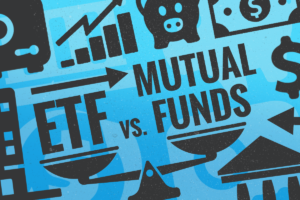
By ATGL
Updated February 24, 2024
Government bonds represent a cornerstone of investment portfolios, offering a blend of security and predictable returns. Issued by governments, these bonds are essentially loans investors grant to the federal government in return for interest payments over a set period of time, culminating in the repayment of the principal at maturity. This article illuminates what government bonds are and guides investors on how to procure them.
What Are Government Bonds and How Do They Work?
Government bonds are debt securities that national governments issue to fund their activities and obligations. By purchasing a government bond, an investor lends money to the issuing government in exchange for periodic interest payments and the return of the bond’s face value at its maturity date. Given their backing by government entities, these bonds are perceived as low-risk investments, making them a preferred choice for conservative investors seeking stability and predictable income.
How Government Bonds Function
Investing in bonds means providing the government with a loan. The government, in turn, commits to paying the investor interest at a predetermined rate and schedule, concluding with the repayment of the principal amount once the bond matures. The interest rate, or yield, of a government bond can be fixed or variable, offering investors a predictable income stream.
Let’s say an investor purchases $10,000 worth of Treasury Notes (T-Notes) with a five-year maturity and an annual interest rate of 2%. Each year, the investor would receive $200 in interest payments ($10,000 x 2% = $200). Over the five-year term, the total interest earned would be $1,000 ($200 x 5). At the end of the five years, the investor would also receive back the original $10,000 invested.
Common Types of Bonds Issued by the Government
Understanding the different types of Treasury securities, including Treasury bills (t bill), notes, and bonds, is crucial for investors looking to diversify their portfolios with government-issued debt.
Treasury Bills, Notes, and Bonds
- Treasury Bills (T-Bills): Short-term securities that mature in one year or less. Investors buy T-Bills at a discount to their face value and receive the full face value at maturity, with the difference representing the interest earned.
- Treasury Notes (T-Notes): Medium-term securities with maturities ranging from two to 10 years. They pay interest every six months and return the principal, the face value, upon maturity of the bond.
- Treasury Bonds (T-Bonds): Longer-term bonds with maturities of 20 to 30 years. Like T-Notes, they offer semi-annual interest payments and return the principal at maturity.
- Zero-Coupon Bonds: Issued by the government at a discount to face value, paying no periodic interest but redeemed at face value at maturity.
Municipal Bonds
Municipal bonds are issued by states, cities, counties, and other municipal government entities to fund public projects like schools, highways, and infrastructure. There are two main types:
- General Obligation Bonds: Backed by the full faith and credit of the issuing municipality, these bonds are supported by the bond issuer’s taxing power.
- Revenue Bonds: These bonds are not backed by taxes but by revenues from specific projects or sources, such as toll roads or utilities.
Treasury Inflation-Protected Securities (TIPS)
TIPS are a type of United States Treasury security designed to protect investors from inflation risks. The principal value of TIPS increases with inflation rates and decreases with deflation, which is reflected in the interest payments that are made to the investor.
Floating Rate Notes (FRNs)
FRNs are bonds to invest in that have a variable interest rate, which is adjusted periodically to reflect changes in a baseline interest rate, such as the U.S. Treasury bill rate. This adjustment mechanism helps protect investors from the risk of declining interest rates.
Benefits of Investing in Government Bonds
Investing in government bonds offers several key advantages, making them an attractive component of a diversified investment portfolio:
- Safety and Security: Government bonds are backed by the issuing government’s credit, making them one of the safest bond investment options available. This is particularly appealing for risk-averse investors.
- Predictable Income: Most government bonds provide regular, fixed-interest payments, offering a steady and predictable income stream. This can be particularly valuable for retirees or those seeking to generate a reliable bond income.
- Inflation Protection: Certain types of government bonds, such as TIPS, offer protection against inflation, ensuring that the purchasing power of your investment is maintained over time.
- Tax Advantages: Income from municipal bonds is often exempt from federal income tax and, in some cases, state and local taxes if the investor lives in the state where the bond was issued. This can significantly increase the effective return on investment for taxpayers in higher brackets.
- Diversification: Including government bonds in an investment portfolio can help diversify risk, as the bonds often move differently in the market than stocks. This diversification can reduce overall portfolio volatility and provide a cushion against stock market downturns.
By understanding the different types of government bonds available and recognizing the benefits they offer, investors can make informed decisions that align with their financial goals, risk tolerance, and income needs.
How Do You Purchase Government Bonds?
Purchasing government bonds is a straightforward process, allowing investors to lend money to government entities in exchange for periodic interest payments plus the return of the bond’s face value at maturity. Here are your options:
- Direct Purchase: Many governments facilitate the direct purchase of bonds through their treasury departments. For example, in the United States, investors can buy Treasury bills, notes, bonds, and other government securities directly through the TreasuryDirect website.
- Through Financial Institutions: Banks and brokerages offer government bonds for sale. This route can be particularly convenient for investors who already have brokerage accounts, as it allows for easy integration into their existing investment portfolios.
- Secondary Market: Government bonds can also be purchased on the secondary market through a broker. This option provides investors with the flexibility to buy bonds that may not be currently available directly from the government and to sell bonds before they mature. For investors interested in more active portfolio management, trading bonds on the secondary market can offer opportunities to capitalize on interest rate movements and market trends.
- Mutual Funds and ETFs: For those seeking diversification within government bonds without purchasing individual securities, investing in mutual funds or exchange-traded funds (ETFs) that specialize in government bonds is an effective strategy. These funds pool money from many investors to buy a broad portfolio of bonds.
Master Government Securities Investing With Above the Green Line
Investing in government securities can be a prudent way to achieve financial stability and growth. However, navigating the complexities of the bond market requires knowledge and strategy. Above the Green Line simplifies this process, offering expert guidance and proprietary metrics to identify the most promising government securities investment opportunities.
Our approach demystifies the intricacies of bond investing, empowering you to optimize the timing of your trades and align with prevailing market trends. Whether you’re a seasoned investor or new to the bond market, our resources and tools are designed to elevate your investing journey.
Ready to enhance your investment strategy and achieve your financial goals with government bonds? Explore our memberships at Above the Green Line and unlock the full potential of your investment portfolio.





